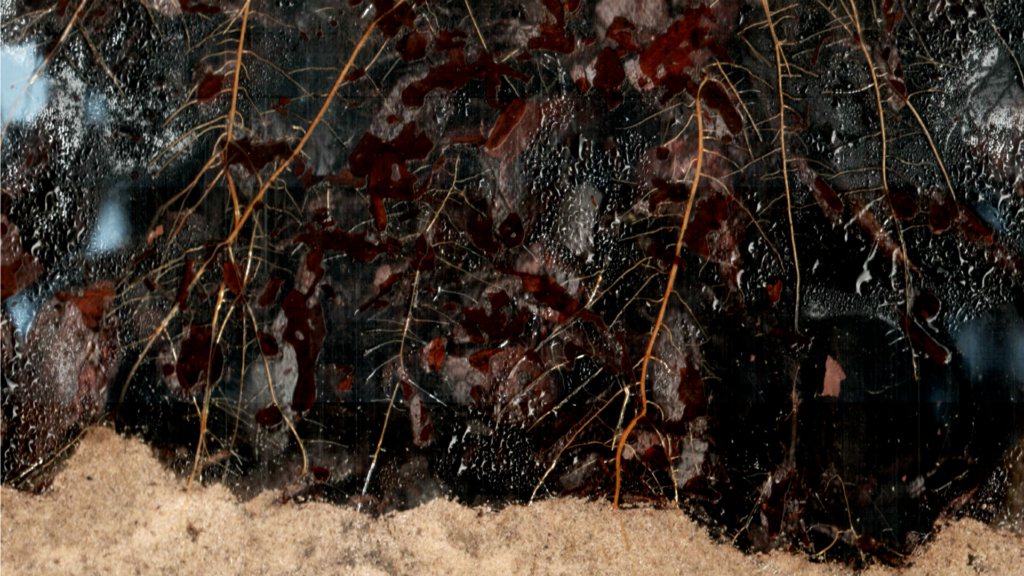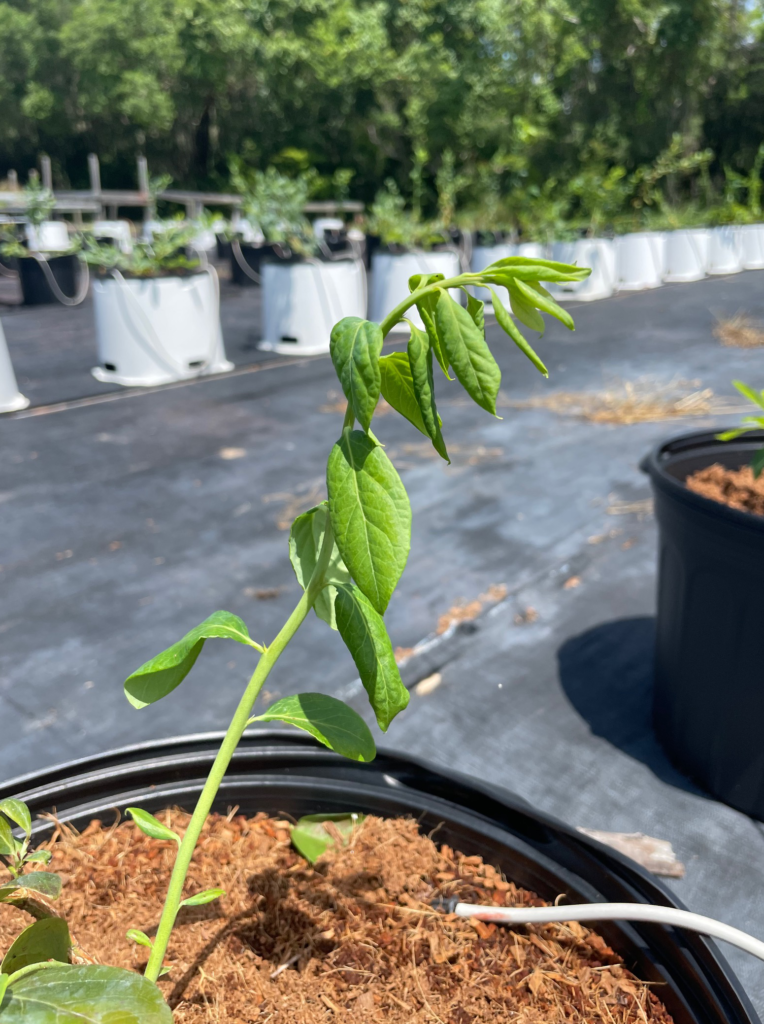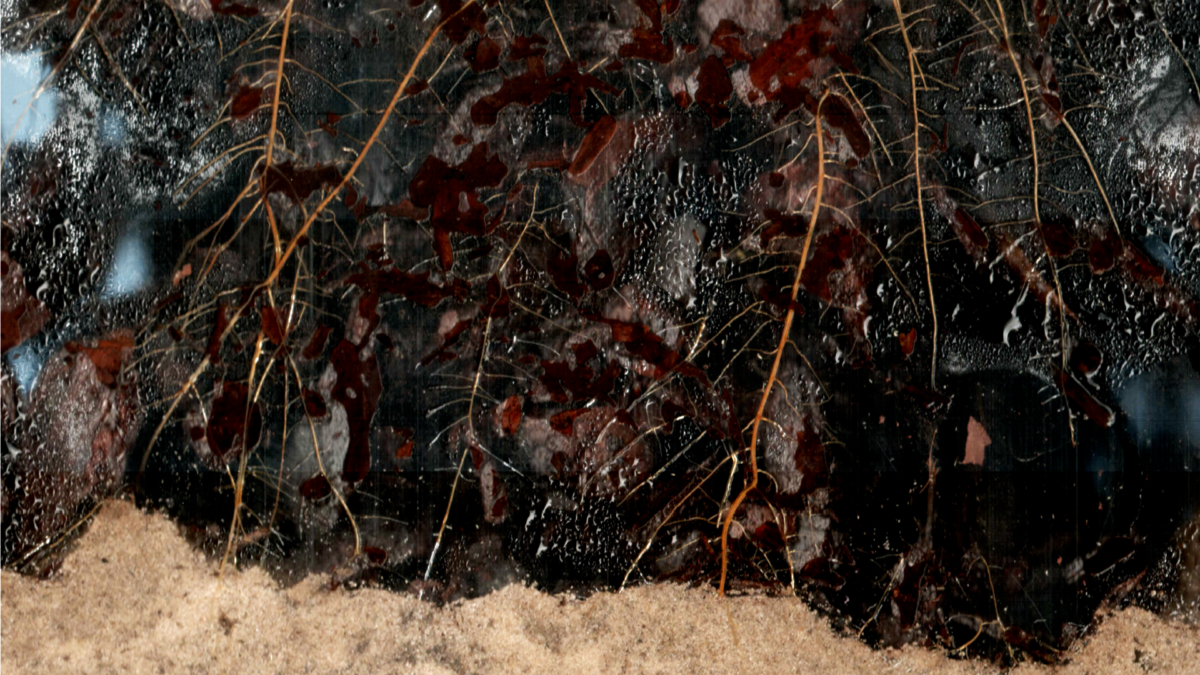By Gerardo H. Nunez
Blueberry bushes have a complicated relationship with water. Too little water can limit blueberry growth and productivity, while too much water can lead to root diseases and loss of vigor. This article focuses on the role that leaf and root age plays in irrigation success.

WATER UPTAKE AND ROOTS
Blueberry bushes take up water through their shallow and fibrous root systems. While there are differences among varieties, most blueberry roots are found in the shallowest 15 inches of soil. For example, in farms where blueberry bushes are planted in raised beds, roots rarely reach below the bed.
Pine bark and sandy soils have very low water retention. Water can percolate through them easily and rapidly. The combination of shallow roots and low water retention makes blueberry irrigation a challenging task. Short and frequent irrigation events are the best strategy to maximize blueberry water uptake. Long irrigation events can be wasteful because water percolates below the plant, carrying valuable fertilizers. Additionally, long irrigation events can create hypoxia (lack of oxygen in the root zone) and promote pathogen attacks.
In blueberries, water uptake occurs preferentially in young, white roots. Woody and older roots are worse at taking up water than young roots. Therefore, water uptake efficiency is higher during periods with abundant young roots. University of Florida Institute of Food and Agricultural Sciences (UF/IFAS) research has identified two root flushes in southern highbush blueberry: one in late spring (right after the end of harvest) and one during the fall (coinciding with flower bud initiation). Water and fertilizer uptake are maximized during these periods.
Water moves from the roots to the rest of the plant through the xylem, a specialized plant tissue that acts as a pipe. Water lost from stems, leaves, flowers or fruits (a process called transpiration) creates a suction force that pulls water up the xylem.

A LOOK AT LEAF WILT
Stomata are microscopic apertures in the leaf underside. Blueberry stomata range in size between 100 micrometers and 500 micrometers (for comparison, the average human hair is 75 micrometers). Stomata open to allow water evaporation out of the leaf and close when the plant needs to conserve water. Mature blueberry leaves carry out this process very efficiently. This is why wilting of mature leaves is rarely seen. On the other hand, wilting is not uncommon in young blueberry leaves.
A key difference between young and mature blueberry leaves can be seen in their cuticles. The leaf cuticle is a hydrophobic layer that coats blueberry leaves and gives them their characteristic glossy appearance. The cuticle prevents water loss from any part of the leaf other than the stomata. Mature leaves have fully developed cuticles. So, they only lose water through their stomata. On the other hand, young leaves do not have fully developed cuticles. So, they can lose water from every part of the leaf.
During the summer, when plants are growing vegetatively, there are many young leaves on the plant. When temperatures peak in the afternoon, young leaves transpire even when their stomata are closed. At this time, young leaves lose more water than xylem can deliver, which leads to wilting.
Blueberry is not the only plant in which afternoon wilt is observed in young leaves. This occurs in peach trees and several vegetables, too. Fortunately, afternoon wilt is nothing to worry about. Under most conditions, young leaves recover their turgidity once temperatures start dropping in the late afternoon or evening. Afternoon wilt eventually disappears once leaves have fully developed cuticles.
UF/IFAS research suggests that blueberry leaves complete their cuticular development within three weeks of expanding. That being said, some varieties appear to have cuticles that restrict water loss more than others. Each southern highbush blueberry variety is a little different, so growers are encourage to take note of which varieties wilt in the afternoon and which do not. Wilting at other points in the day or the year (when temperatures are lower) is unrelated to cuticle development.
Growers should remain vigilant to ensure that irrigation systems and delivery lines are working properly. However, afternoon wilt can be observed even under optimum irrigation. Afternoon wilt is not caused by a lack of water and cannot be corrected with additional irrigation. Irrigating more in the afternoon does not help young blueberry leaves keep up with their uncontrolled, high transpiration rate.
TAKE-HOME MESSAGE
Not all roots and leaves are equal. Organ age plays an important role in water relations. In roots, young means good. Young roots are more efficient at taking up water. In leaves, young means trouble. Young leaves loose water through their underdeveloped cuticles and wilt in the early afternoon. Remembering these principles can help growers interpret what they see on the farm and improve their understanding of the complicated relationship between blueberries and water.
Gerardo H. Nunez is a UF/IFAS assistant professor in Gainesville.










